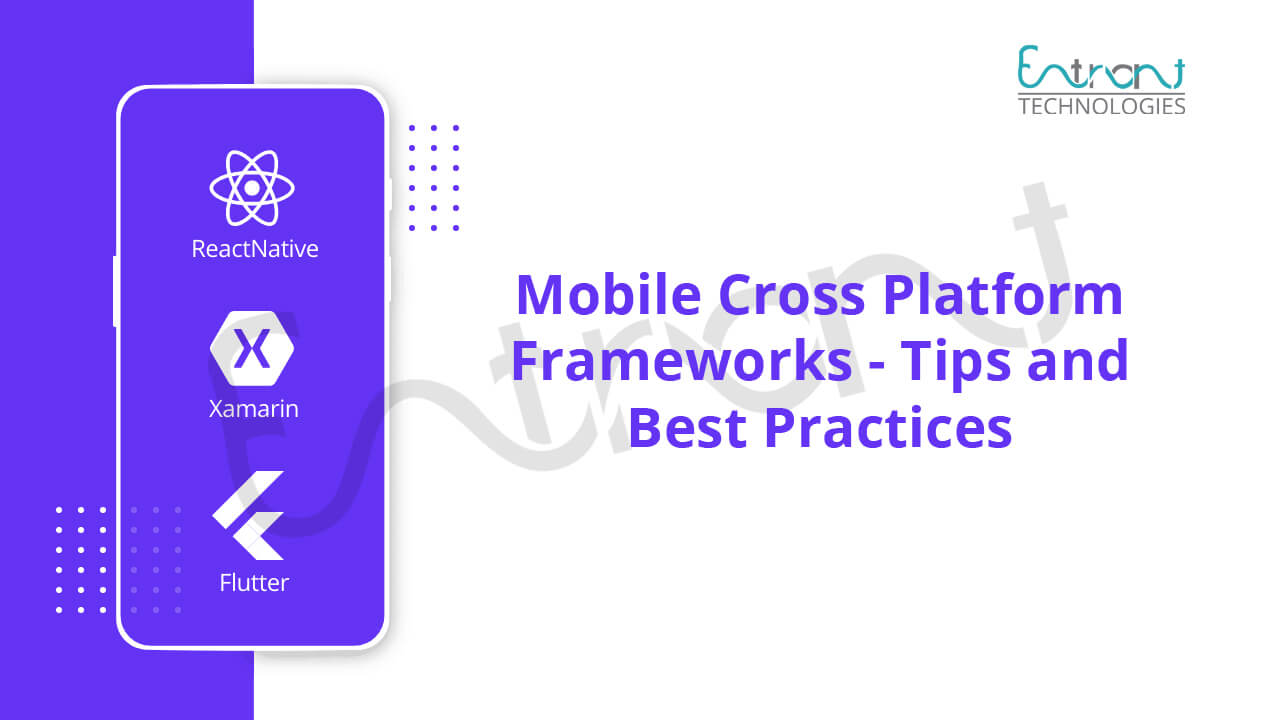
The universe of mobile software has undergone a significant evolution in the most recent decade.
The adjustments in the market, which make it progressively explained, interconnected, and loaded with complex variables have implied that the developers deepened the potential offered by current technologies, instruments, and specific (native) guidelines of the two most well-known working frameworks: iOS and Android app development.
The expanding complexity of the different platforms, and their inconsistency, has anyway made it increasingly complicated for a single programmer (or development group) to remain updated on all innovations at the implementation level.
For quite a while, endeavors have been made to standardize the developments for the different mobile platforms under a common denominator, with frameworks that anyway move away from the "native" layer of the individual frameworks and, by presenting abstractions that limit the freedom of the developers, don't permit to completely misuse the capability of the devices and at last, give altogether lower client experience, or at least it was until recently.
Multi-platform mobile app development solutions
To better master the complexity of code development, various methods of managing the development of multi-platform apps were born through the use of Framework.
The technologies for making cross-platform mobile applications are partitioned into two principal categories: Web-based applications, and multi-platform applications written in a common language, depending on a particular Framework.
1. Web-Based Solutions
Online technologies frequently utilize native "container" software like a normal web browser, which connects the hybrid application written in HTML/JavaScript (similar technologies on which depends on the web) and the working framework. This is the situation, for instance, of Cordova/PhoneGap, which permits hybrid apps to get to the specifications of the individual mobile device (for example screen size) and making accessible a few features in any case not ordinarily available from the web (explicit functions of the working framework or equipment).
Also read: How To Hire A React Native App Developer in Your Pocket Budget?
All the more as of late, Progressive Web Apps (or PWA) have additionally begun to spread, fundamentally determined by Google, yet which also work on Apple with certain cutoff points. PWAs conquer the requirement for a "container" and are grown completely in web technology, on account of the new HTML5 specifications, much the same as a website. The PWA Additionally, not at all like different technologies mentioned, doesn't have native components and isn't appropriated on the traditional App Store, yet directly with a connection like an ordinary website. This is an interesting but not yet fully mature technology, which we are probably going to talk about later on.
2. Multi-platform framework
Through a multi-platform development framework, it is conceivable to compose code that will be ordered to be run legitimately on the different platforms, along these lines to a native app. There are different frameworks for multi-platform development, with various attributes regarding the nature of the outcome and extent of application, consequently, it is important to pick the correct tools as indicated by the desired objectives.
For the development of, for instance, cross-platform mobile apps, the most utilized frameworks today are React Native, Flutter (as of late made accessible just because by Google), and Xamarin.
For the development of playful and multimedia applications (video games, AR/VR), there are explicit frameworks, for example, Unity and Unreal Engine (which we regularly use in entrant technologies, yet which we will talk about in a future article).
Also read: Reasons Why Flutter App Development is Trending in 2020
Both web-based technologies and multi-platform frameworks have the advantage of utilizing only one language for the development of the application, be that as it may, both have limits in the possibility of integration with the individual specificities of the working frameworks of the devices, in the maintainability of the code and results as far as client experience. In this article we have chosen to concentrate on cross-platform frameworks, which as indicated by our experience ensure a higher quality of the result, saving money on development times and costs without trading off a lot with the exploitation of the capability of mobile devices.
In the following passages, we will, thusly, go into additional information on the main frameworks utilized in the development of mobile apps.
1. React Native: the advantages and disadvantages of the Facebook Framework
One of the innovations on which we have been working for quite a while with phenomenal outcomes and customer satisfaction in the React Native development.
React Native is a framework that allows you to make multi-platform mobile apps discharged and advanced by Facebook Inc. Applications are created utilizing the JavaScript language in combination with the native React library. This permits the creation of applications that utilization GUI components like those utilized by native development processes.
The quality of React Native is the capacity to compose the code in JavaScript and assemble it in a native project, accomplishing performances exceptionally near the performances accomplished by applications composed legitimately in the native language.
In addition to the JavaScript components that the Framework offers, it is conceivable to make new components and functionalities utilizing the native code of the platform on which it is being created and coordinate the latter into the JavaScript part of the Framework.
This approach opens numerous opportunities for developers, regardless of whether sometimes it presents criticalities given by the mono-thread nature of JavaScript. On the off chance that in traditional applications this limitation can be irrelevant, in contexts where it is fundamental to have elite progressively, React Native risk not being the most ideal decision.
In addition to the great performance (particularly for applications that don't require constant functionality, for example, games), the upsides of the development in React Native are given by the utilization of JavaScript as the only language behind the development on both Android and iOS, which permits broad code sharing. The quick spread of React Native has likewise permitted the proliferation of writing and documentation which improves and enhances the work of the developers.
The Framework was made by Facebook Inc. which deals with its development and implementation forms as per its arrangements however is discharged for nothing out of pocket as open source. The popularity of React Native is still limited and there are not many developers yet, however it is surely developing and bound to increment.
2. Flutter, the Google Framework: Advantages and Benefits
Flutter is a Dart-based development environment, another programming language created by Google. The language exploited by Flutter, Dart, can be arranged natively on Android and iOS platforms. This element permits developers who pick Flutter to make applications with performances very similar to those written directly in native.
Flutter app development gives various predefined widgets that can be utilized to make interfaces that keep up the native look.
The way that Flutter is promoted by Google consists of a bit of leeway because of the tremendous support that Google provides for the developers who choose Flutter (additionally for evident marketing reasons), besides the developer network circling around Flutter is as of now rich and brimming with supporting reports. A basic issue is given by the reference programming language, Dart, which is as yet not across the board today and little know by developers.
Flutter is additionally a generally late task in the cross-platform development landscape, this makes it not generally reasonable as a decision for applications that require numerous integrations with a third-party system, native components, or complex functionalities. In entrant technologies, we began utilizing Flutter for certain projects with great satisfaction, particularly for not complex applications and for the quick creation of prototypes.
3. Xamarin, the Microsoft Framework
Xamarin is an IDE (Integrated Development Environment) and a Framework promoted (and owned) by Microsoft. Xamarin is utilized for cross-platform application development, utilizing the C# language, and afterward assembled in native code. The compilation and translation process implies that the last item is in all regards a native application.
Also read: How to Hire the Best Web Developer in India?
In the run of the mill Xamarin project there are three primary pieces of the application that are created:
- The business logic, developed in .NET style and 100% reused
- The iOS interface, developed with the specific SDK for Apple
- The Android interface, developed with the specific SDK for Google.
The need to create graphical interfaces independently originates from the approach showed by Xamarin himself to manage cross-platform programming: the realistic libraries are mounted legitimately over their native partners, functioning in all regards as basic connectors. This plan decision forces developers to compose specially appointed bits of code for singular platforms.
So as to defeat this cutoff, for certain years Xamarin has made accessible to developers a library for the creation of multi-platform interfaces. The more prominent rate of development permitted by this approach is paid for with retaliation: lower adaptability of the components, exacerbated by the absence of supporting documentation.
The choice of technology and development team
In conclusion, the decision of technology frequently relies upon quite certain variables of the item to be made. In entrant technologies, we have increased a long involvement with these years, and we realize how to guide the customer towards the most ideal decision, spurring it, and sharing the advantages that get from it. Regardless of what the innovative decision will be, the composition of the term for the development of mobile apps is similarly significant.
A few organizations pick the construction of groups thus "multiplatform", that is, development teams that incorporate master Framework developers who work in cooperative energy with experts of the individual working frameworks. Entrant Technologies, for instance, oversees both native projects and multi-platform apps, in the last case with a group that works in close synergy energy with the native area (iOS and Android), making a group of experts dedicated to making the digital item performing on each device and/or working framework.
Do you definitely realize how to build up your next mobile project? Let's talk about it together.


